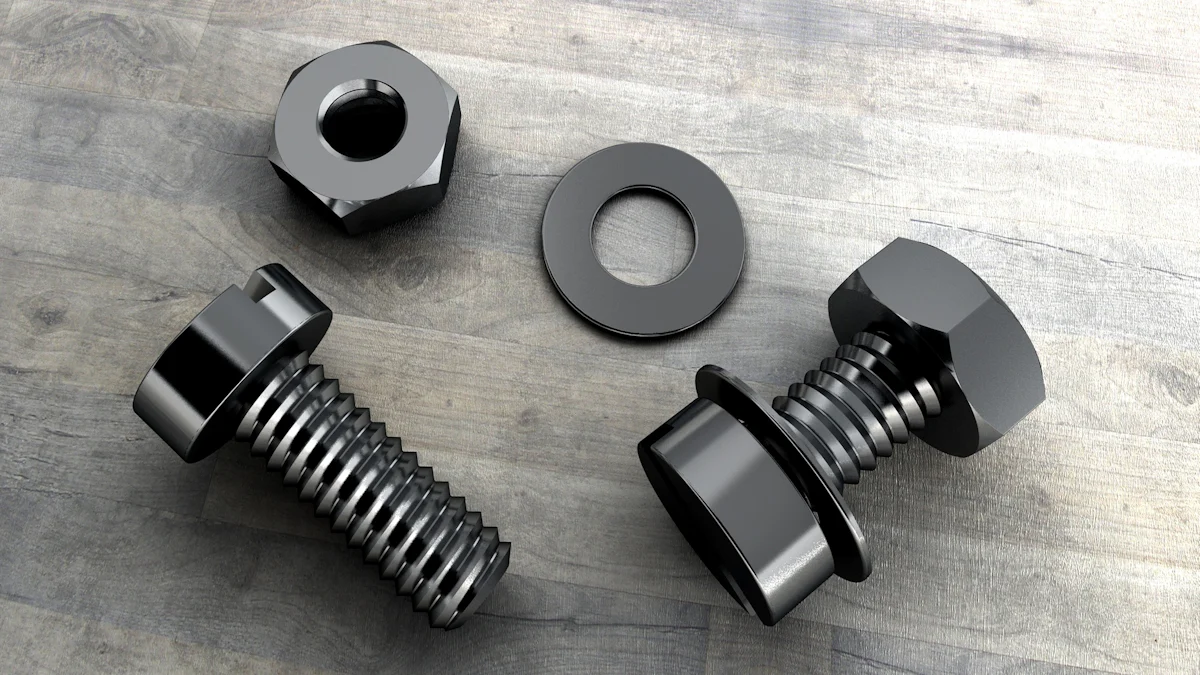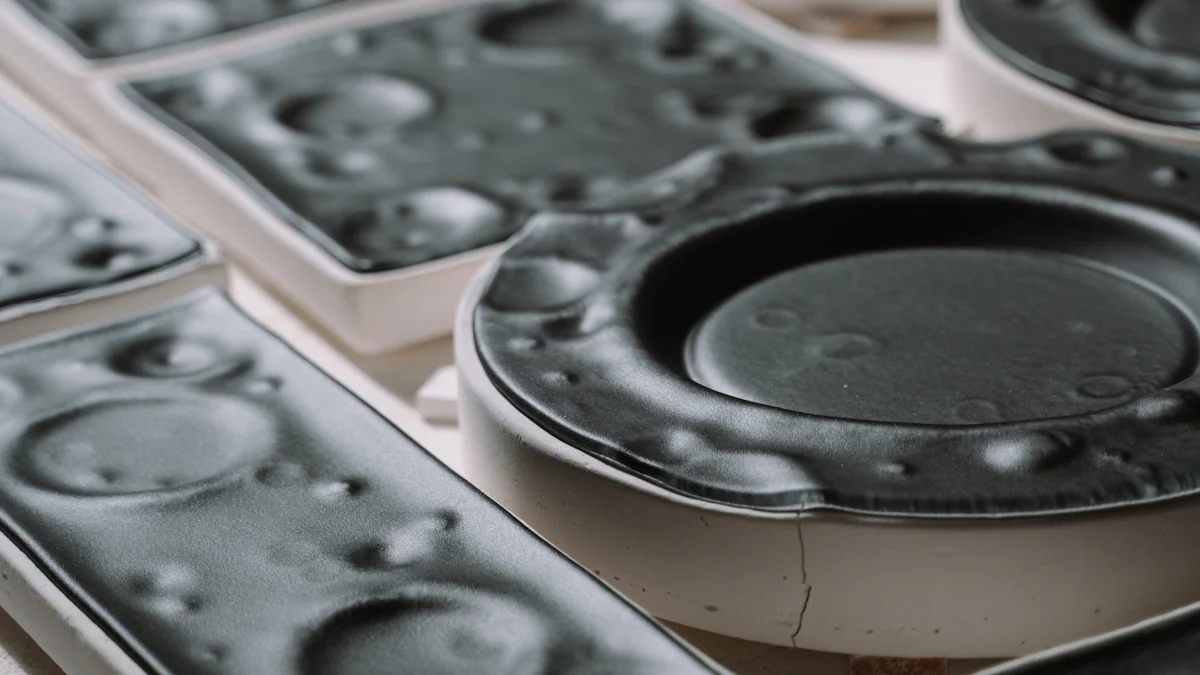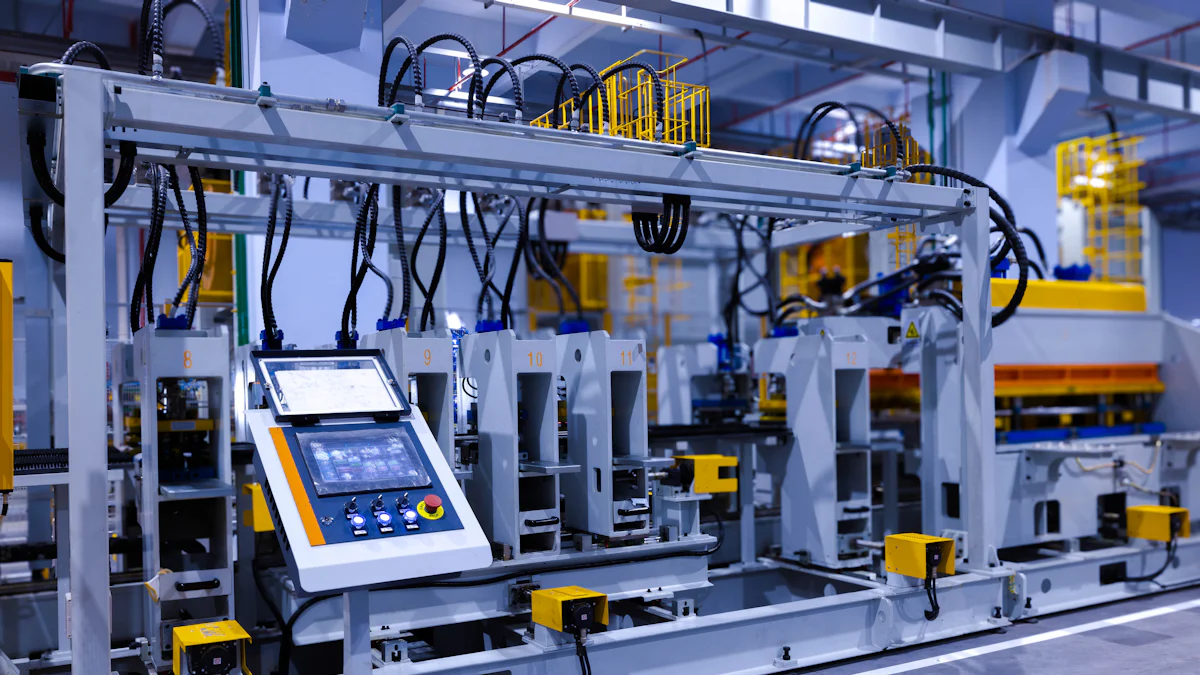
Metal injection molding (MIM) is one of the best uses of metal injection molding for complex geometries, revolutionizing the way intricate metal parts are manufactured. This process offers unparalleled precision and efficiency, particularly for complex geometries. The global MIM market, valued at USD 5.07 billion in 2023, is experiencing rapid growth driven by the increasing demand for lightweight components across various industries, including automotive, healthcare, and electronics.
Key Takeaways
- Metal injection molding (MIM) makes detailed designs with great accuracy.
- MIM lets you pick different materials to create tricky shapes.
- It saves money for big projects, cuts waste, and is fast.
Why Metal Injection Molding is Ideal for Complex Geometries

Precision and Accuracy in Complex Designs
Metal injection molding (MIM) stands out for its ability to produce intricate designs with exceptional precision. You benefit from improved dimensional stability, which ensures consistent part dimensions even under varying conditions. The process uses fine metal powders mixed with a binder, allowing for tight tolerances and intricate details. After injection molding, the sintering process further enhances accuracy, ensuring parts meet exact specifications.
| Feature | Contribution to Precision and Accuracy |
|---|---|
| Improved dimensional stability | Ensures consistent and precise dimensions under varying conditions. |
| Reduced material waste | Minimizes waste through precise control of material usage. |
| Enhanced design flexibility | Enables creation of intricate geometries that are hard to achieve otherwise. |
| Consistent and repeatable results | Ensures each part meets specifications through excellent process control. |
This combination of features makes MIM a reliable choice for creating complex geometries with consistent results.
Flexibility in Material and Design Options
MIM offers unmatched flexibility in both materials and design. You can choose from a wide range of materials, including stainless steel, titanium alloys, and nickel-based superalloys. Each material brings unique properties, such as corrosion resistance or high strength-to-weight ratios, enabling the production of parts tailored to specific needs. The versatility of these materials allows you to create intricate shapes, including undercuts, thin walls, and internal cavities.
Additionally, MIM enables the creation of net shape features like internal threads, profiled holes, and detailed surface textures. These design options are often cost-prohibitive with traditional methods, but MIM makes them achievable and efficient.
Efficiency in Mass Production and Waste Reduction
MIM excels in producing large quantities of complex parts efficiently. The process minimizes material waste by creating near-net-shape components, reducing the need for extensive machining. Traditional methods like CNC machining often generate significant waste, especially when working with expensive alloys. In contrast, MIM is a greener technology, offering a more sustainable solution.
One of the most significant advantages of MIM is its ability to produce complex, high-precision parts with minimal material waste. This efficiency stems from its capability to create near-net-shape components, requiring little or no post-processing after sintering.
By reducing lead times and ensuring consistent quality, MIM provides a cost-effective solution for mass production without compromising on precision or complexity.
Best Uses of Metal Injection Molding for Complex Geometries
Medical Devices and Surgical Tools
Metal injection molding plays a vital role in the medical industry, where precision and reliability are non-negotiable. You can find MIM components in various medical devices and surgical tools, including:
- Scalpels, clamps, and forceps
- Orthopedic implants and dental brackets
- Minimally invasive devices and surgical instruments
This process allows you to produce intricate geometries with tight tolerances, ensuring the safety and effectiveness of medical tools. MIM also supports the use of biocompatible materials, making it ideal for implants and devices that interact with the human body. The ability to mass-produce these components with consistent quality makes MIM indispensable in healthcare.
Aerospace and Defense Components
In aerospace and defense, lightweight yet durable components are essential. Metal injection molding enables you to create intricate parts with high strength-to-weight ratios, improving fuel efficiency and payload capacity. Applications include:
- Firearms components and tactical gear
- Communication devices and aerospace parts
MIM ensures exceptional accuracy, which is critical for aerospace components where precision is paramount. This process also reduces lead times and supports customization, making it a cost-effective solution for complex geometries in these industries.
Automotive and High-Performance Parts
The automotive industry benefits significantly from MIM’s ability to produce durable and high-performance components. Examples include:
- Fuel injectors, turbocharger parts, and valve components
- Gears, shafts, and bearing cages
MIM allows you to use materials like stainless steel and titanium alloys, which enhance strength and durability. These properties ensure that automotive parts can withstand heavy loads and resist wear over time. Additionally, MIM’s capability to create lightweight designs contributes to improved vehicle efficiency.
Consumer Electronics and Miniature Components
Metal injection molding is a game-changer for consumer electronics, where compact and intricate designs are crucial. You can find MIM parts in:
- Smartphone casings and smartwatch components
- Sensors and connectors for electronic devices
- Heatsinks and cooling fans in computer hardware
MIM provides the precision needed for seamless integration of these components. Its ability to produce near-net-shape parts reduces post-processing, saving time and resources. This makes MIM an efficient choice for manufacturing miniature and high-tech components.
Advantages Over Traditional Manufacturing Methods
Cost-Effectiveness for High-Volume Production
Metal injection molding (MIM) offers significant cost advantages for large-scale manufacturing. Traditional methods often involve hidden costs, such as tool amortization and retooling expenses, which can range from $25,000 to $100,000 per adjustment. These costs, combined with setup fees and design complexities, make traditional manufacturing less favorable for high-volume production. In contrast, MIM streamlines the production process, reducing the need for multiple manufacturing steps. This efficiency lowers overall costs and ensures scalability for both small and large production runs.
The feedstock for MIM, priced at approximately $24 per kilogram, may seem higher than other powder metallurgy methods. However, the reduced lead times and elimination of additional machining steps offset this cost. Tooling expenses for MIM typically range from $30,000 to $70,000, but the price per unit for MIM parts can be as low as $1 to $5, depending on size and complexity. This makes MIM a cost-effective solution for producing intricate parts in large quantities.
Superior Surface Quality and Dimensional Tolerances
MIM excels in delivering parts with exceptional surface quality and precise dimensional tolerances. The process uses fine metal powders mixed with binders, allowing for intricate details and smooth finishes. This eliminates the need for additional finishing operations, saving both time and costs. For complex geometries, MIM ensures a uniform surface finish through its injection molding and sintering processes. Techniques like chemical polishing further enhance the surface, making it ideal for applications requiring high aesthetic and functional standards.
The ability to produce consistent, high-quality parts with tight tolerances sets MIM apart from traditional methods. By combining powdered metal and injection molding technology, MIM achieves superior results that are difficult to replicate with other manufacturing techniques.
Faster Production Timelines for Complex Parts
MIM significantly reduces production time compared to traditional methods. The process eliminates extensive machining and assembly steps by producing parts in their final form. This streamlined approach shortens lead times and accelerates time-to-market. For intricate designs, MIM combines the benefits of plastic injection molding and powdered metallurgy, enabling faster production cycles.
| Feature | Benefit |
|---|---|
| Shorter lead times | Faster delivery of finished products |
| Elimination of post-processing | Reduced production time and costs |
| High precision and consistency | Increased productivity and cost savings |
By minimizing post-processing and ensuring consistent quality, MIM enhances productivity and meets the demands of industries requiring complex geometries. This efficiency makes it one of the best uses of metal injection molding for complex geometries.
Design Considerations for Complex Geometries

Wall Thickness and Structural Integrity
Wall thickness plays a crucial role in the performance and manufacturability of metal injection molded parts. Maintaining uniform wall thickness ensures consistent shrinkage during sintering, reducing the risk of warping. You should aim for a thickness between 1 mm and 6 mm, depending on the part size, while avoiding sections thicker than 12.5 mm. Thicker areas can lead to non-uniform shrinkage and longer sintering times, which may compromise the part’s quality.
To enhance durability and production efficiency, you must keep wall thickness consistent. Variations can cause pressure drops during the molding process, leading to defects or internal stresses. Tapered walls also help with clean ejection from molds, minimizing damage risks. By balancing wall thickness with material properties and functional requirements, you can achieve optimal strength and reliability in your designs.
Surface Features and Textures
Metal injection molding allows you to create intricate surface features and textures that enhance both aesthetics and functionality. Popular textures include SPI and Mold Tech (United States), VDI (European), and YS (Asian) standards. These textures are widely used in industries like automotive, consumer electronics, and home appliances. For example, textured finishes on dashboard panels or smartphone casings improve grip and visual appeal.
Surface textures also influence mechanical properties such as tensile strength, hardness, and fatigue resistance. The alignment of particles during the molding process affects the microstructure, which directly impacts the part’s performance. By carefully selecting surface features, you can optimize the functionality and appearance of your components.
Sintering Effects on Final Dimensions
Sintering is a critical step in metal injection molding that determines the final dimensions and mechanical properties of your parts. Uniform heating and cooling during sintering are essential to prevent warping, cracking, or residual stresses. Incorrect sintering temperatures can result in weak or porous parts, compromising their quality.
You should implement strict quality control measures to ensure consistent sintering conditions. Impurities introduced during this stage can negatively affect the part’s strength and durability. By maintaining precise temperature control and ensuring uniformity, you can achieve accurate dimensions and high-quality results in your metal injection molded components.
Limitations and Challenges
High Initial Tooling Costs
Metal injection molding (MIM) requires a significant upfront investment in tooling. You can expect initial tooling costs to range between $30,000 and $70,000, which is higher than methods like CNC machining or 3D printing. This cost includes the creation of precision molds essential for producing intricate geometries. Additionally, the metal powder feedstock used in MIM costs approximately $24 per kilogram, which is higher than the $2 to $4 per kilogram typical of other powder metallurgy methods.
Tip: While the initial costs may seem steep, they become justifiable when you plan for high-volume production. By spreading the tooling expenses across thousands of units, you can significantly lower the cost per part.
Material and Process Limitations
Not all materials are suitable for MIM. You are limited to specific metal powders that can mix with binders and withstand the sintering process. Materials like stainless steel, titanium, and nickel alloys work well, but others may not meet the required standards for this method. The process also has limitations in producing extremely large or thick parts. For instance, sections thicker than 12.5 mm may experience uneven shrinkage during sintering, leading to defects.
Note: To overcome these challenges, you should carefully select materials and designs that align with MIM’s capabilities. Collaborating with experienced manufacturers can help optimize your results.
Best Suited for Large-Scale Production
MIM shines in large-scale production but may not be cost-effective for smaller runs. High-volume production, often exceeding 100,000 parts, allows you to leverage economies of scale. The initial tooling costs spread across a large number of units, reducing the cost per part. This makes MIM an ideal choice for industries like automotive, aerospace, and consumer electronics, where consistent quality and high quantities are essential.
- Key Benefits of Large-Scale Production:
- Reduced cost per part due to economies of scale.
- Minimal downtime and efficient use of materials.
- Consistent quality across all units, meeting strict industry standards.
By focusing on large-scale production, you can maximize the benefits of MIM while minimizing its cost challenges.
Metal injection molding offers you a precise and efficient way to create complex geometries. Its versatility spans industries like medical, aerospace, and automotive. You gain cost-effective, high-quality solutions for intricate designs. Despite challenges, MIM’s benefits dominate, making it a revolutionary process that transforms modern manufacturing and meets your high-performance needs.
FAQ
What industries benefit the most from metal injection molding?
Industries like medical, aerospace, automotive, and consumer electronics benefit the most. MIM produces precise, high-performance components for these sectors efficiently and cost-effectively.
How does MIM compare to traditional manufacturing methods?
MIM offers better precision, reduced waste, and faster production for complex geometries. It outperforms traditional methods in cost-effectiveness for high-volume production.
Can MIM handle small production runs?
MIM works best for large-scale production. High initial tooling costs make it less suitable for small runs, but economies of scale reduce costs for high quantities.
Tip: For smaller runs, consider alternative methods like CNC machining or 3D printing.
